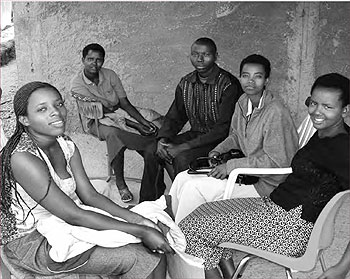I am a beneficiary and a scholar of the modern Civil Rights Movement in the United States of America. What is known and remembered about the Civil Rights Movement is important in determining the next major leap forward for democratic societies and in understanding the institutions and rhythms that sustain democratic rituals.


I am a beneficiary and a scholar of the modern Civil Rights Movement in the United States of America. What is known and remembered about the Civil Rights Movement is important in determining the next major leap forward for democratic societies and in understanding the institutions and rhythms that sustain democratic rituals.
The Civil Rights Movement was arguably among the world’s most significant social reform and protest efforts after World War II. It was waged largely by poor African Americans who defied the racial practices and traditions of the United States.
Equally important, the Movement took aim at, and indeed brought into dispute on a global scale, the most tenacious mythology of the modern age: the supremacy of an imagined white race over the other imagined races of the human species.
I was a young man when these events came into sharp focus, setting the stage for my own democratic sensibilities in the twenty-first century. The Civil Rights Movement unfolded over more than two decades, capturing the attention of a huge swath of humanity, including emerging democracies such as that of Rwanda.
Having recently visited Rwanda, I thought of the legacies of the Civil Rights Movement in Africa and, indeed, how modern Africa influenced the Movement. I was struck at once by the poignant narrative of modern Rwanda, especially its attempt to recover from a gruesome genocidal war in 1994, and the deepening interest by Rwandan leaders in placing their nation on a path toward human-rights based democracy.
That was also the objective of civil rights activists in the United States during the 1950s and 1960s, when an embittered past of racial terrorism intersected with an intense effort to redefine the meaning of public life and especially public spaces such as streets, parks, buses, schools, eateries, and voting booths.
While such spaces were public in nature, they were racially exclusionary, barring people of color from a full measure of their rights and aspirations as citizens. As a result of these physical and perceptional barriers, the social architecture of many communities was weakened.
Citizenship and civic life were racialized and so was the foundation of democracy. Many lessons result from that period, which is now remembered by aging eyewitnesses and interpreted by scholars. Among the most important lessons is that public and civic spaces within democratic societies must be open to all, daringly so in the face of old traditions that once demarcated members of society along the lines of race, ethnicity, gender and social class.
Americans learned this lesson from young African American students in Greensboro, North Carolina. In 1960, they placed their bodies in between those who despised them and what was, in fact, a powerful symbol of social acceptance, the lunch counter in the local Woolworth’s Department Store. The students knew that spaces, especially public ones, were arenas for potential social acceptance. Hence they forced whites in Greensboro, and across the nation, to accept black diners as equals within a sphere that had too long clung to a white-over-black racial mythology.
Over the course of the Civil Rights Movement, other spaces and symbols of social acceptance would soon emerge and become a part of America’s deepening respect for the worth of each individual. Though democratic thinking may have emerged out of the writings and rhetoric of the founding fathers and the American Revolution, by the end of the 1960s it was clear that democratic behavior was centered in civic spaces where the rituals of democracy are played out on a daily basis.
In retrospect, we now know that democracy is nourished in spaces where a deep and abiding respect for the essential worth of each individual has far more meaning than an individual’s ethnicity, race, social class, gender, or sexuality. Emerging democracies, especially those that have been challenged by horrific spasms of ethnic violence, will have to create or refurbish the meaning of such democratic spaces.
They should be public, open and accessible to all, free of animus against "the other.” Rwanda has such spaces, especially those for commemoration, and its citizens want to commit themselves to creating new ones, such as a public library system, educational and play spaces and spaces where civic discourse is animated, uninterrupted, and gloriously competitive. Indeed, democratic practices rely as much on the unpredictable daily rituals of the common people as they do on formidable constitutional principles.
Clement Alexander Price
Board of Governors Distinguished Service Professor of History
Director, Institute on Ethnicity, Culture, and the Modern Experience
Rutgers University, Newark
This article is part of a series of articles from ‘The New Rwanda: Prosperity and the Public Good’ by Sondra Myers.
Email: sondram@ix.netcom.com


